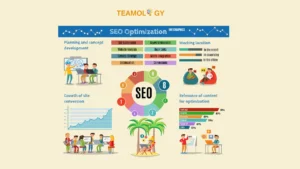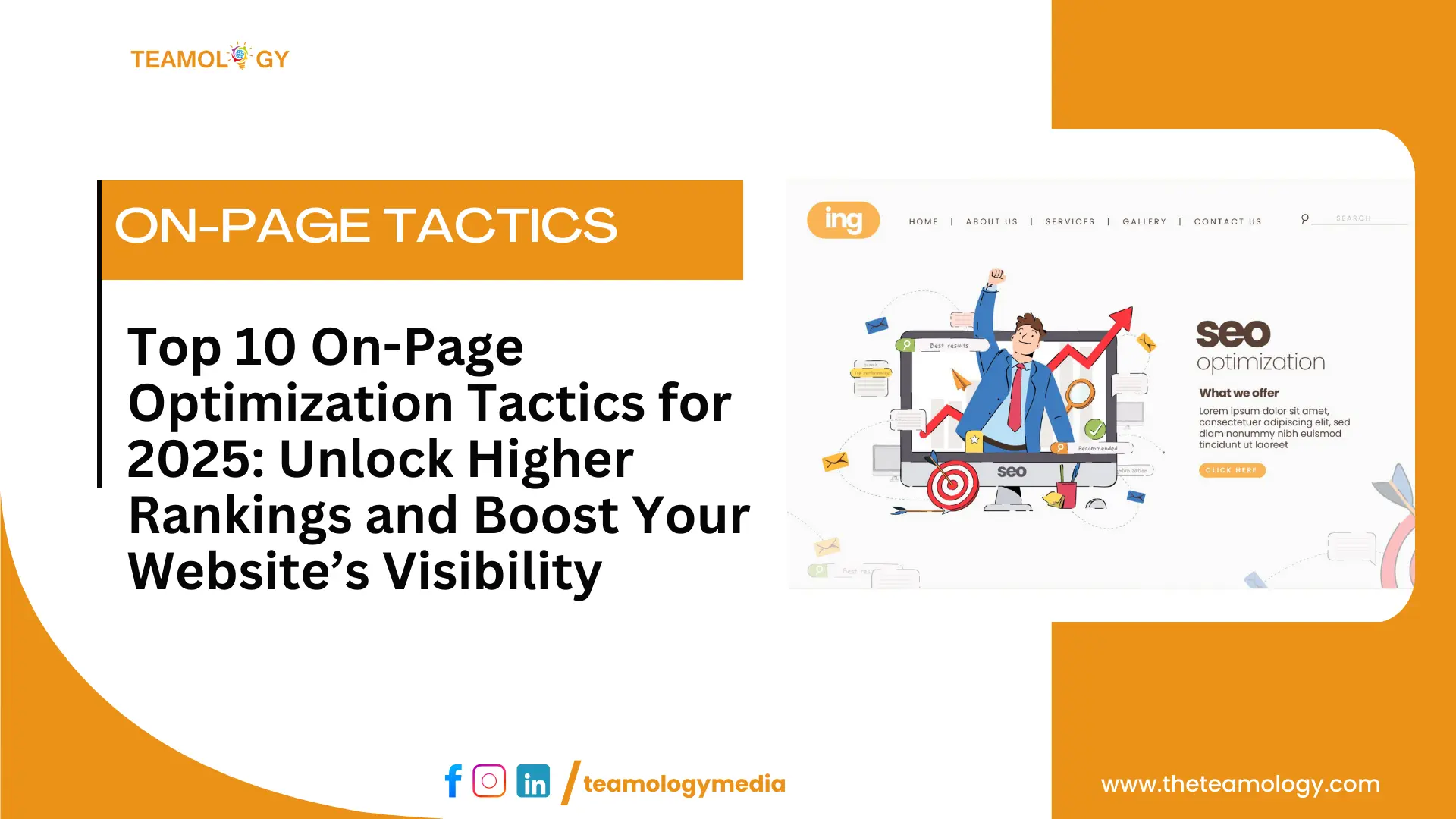With 2025 approaching, on-page optimization is a trending SEO strategy if you want to stay ahead of the curve. However, the landscape continues to evolve due to AI-driven tools and shifts in user experience (UX) metrics. Let’s take a deep dive into how to dominate search rankings by leveraging these changes.

SEO Optimization Guide
1. Elevate Content to Excellence
Content is still king but, in 2025, more about quality than it is about quantity. Algorithms at Google are now way better to understand the depth, relevance, and originality of your content. Natural Language Processing (NLP) techniques help your content not only answer the queries users pose but also maintain a conversational tone. AI tools like ChatGPT are not a replacement for human authenticity and insights. Keep the intent of your audience front and center for on-page optimization whether that’s informational, transactional, or navigational.
2. Prioritize page experience metrics
Google’s Core Web Vitals—Largest Contentful Paint (LCP), First Input Delay (FID), and Cumulative Layout Shift (CLS) are some of the most important page experience ranking factors. These metrics impact rankings greatly and need to be constantly monitored. No compromise can be made about fast loading times, mobile responsiveness, and visually stable layouts. Utilize tools such as Google PageSpeed Insights and Lighthouse to find and fix performance bottlenecks.
3. The Role of AI-Driven SEO Tools
AI is no longer just a buzzword but a need for effective SEO. Tools such as Surfer SEO and Clearscope give keyword analysis and content optimization suggestions customized to search intent. Meanwhile, platforms like RankSense and BrightEdge give automated suggestions for on-page optimization. These AI tools not only save time but also help your on-page optimizations to be relevant to the evolving algorithms of searches.
4. Utilizing Schema Markup for Rich Results
Structured data will remain high in importance in 2025. Schema markup enhances your content’s understanding by the search engines, leading to rich snippets that enhance both visibility and click-through rates(CTR). It includes product reviews, FAQs, and events. All such implementations of structured data tend to give a competitive advantage. Tools like Google’s Structured Data Testing Tool simplify the validation of your markup.
5. Improving Internal Linking for Context and Hierarchy
Internal linking goes beyond connecting pages. It’s more about making your site logical to help the user and the search engines navigate it. The successful internal linking supports topical authority and distributes link equity on important pages. Adding the descriptive anchor text and preventing over-optimization can ensure that your internal links add real value.
6. Voice Search Optimization
Voice search is transforming how people use search engines as smart gadgets proliferate. “What’s the best biryani restaurant near me?” is one of the more often asked questions. Your chances of ranking for voice searches are increased by concentrating on long-tail keywords and optimizing for conversational questions. This effort can be strengthened by designing FAQ sections that resemble genuine speaking patterns.
7. UX and Accessibility: The New On-Page Optimization Imperative
User experience and accessibility are critical to successful on-page optimization. Making your website accessible to all users, including those with disabilities, boosts both ethics and search rankings. Incorporate alt text for images, clear and descriptive headings, and keyboard-friendly navigation. Use tools like WebAIM to evaluate and improve accessibility to ensure your site is friendly to users while improving your SEO performance. Inclusivity benefits both your audience and online visibility.
8. Incorporating Visual and Video Content
High-quality images and rich engaging videos are taking up more of the digital ground; these increase user engagement time and dwell time making on-page optimization very easy. While there are platforms such as YouTube and Instagram to place the video content, video embeds on your site give it a high relevancy level. File size optimization and metadata would complement the search engine’s ability to get it ranked even more.
9. E-E-A-T: Experience, Expertise, Authoritativeness, and Trustworthiness
Google focuses much on E-E-A-T that is well-researched, credible, and supported by expert credentials and authoritative sources. Thus, establishing trust is extremely important, especially for an e-commerce business where for instance, HTTPS security customer reviews displayed prominently on the website and other transparent policies will enhance your credibility. Authentic content coupled with credible practices will go a long way in upholding the reputation of any business and appealing to not only audiences but also to search engines, thus a good foundation is crucial for long-term growth and trust in this digital landscape.
10. The Power of User-Generated Content
User-generated content or reviews, testimonials, or user-submitted photographs can be highly effective as often-overlooked on-page optimization strategies. This increases authenticity, increases the content, and generates more community involvement. As this encourages the users to post feedback or participate in forums and blogs, this can signal the search engines’ active participation, and therefore improve rankings. As you add this to your strategy, it creates a dynamic and interactive platform for building trust and strengthening your online presence.
Conclusion
Staying ahead in on-page optimization as we approach 2025 means embracing innovation but staying firmly rooted in core strategies. Focusing on high-quality content, AI-driven tools, and a strong UX, enhanced engagement through user-generated content can help build a sustainable online presence. Adaptation to these trends ensures your brand survives but thrives in an increasingly competitive digital landscape.


